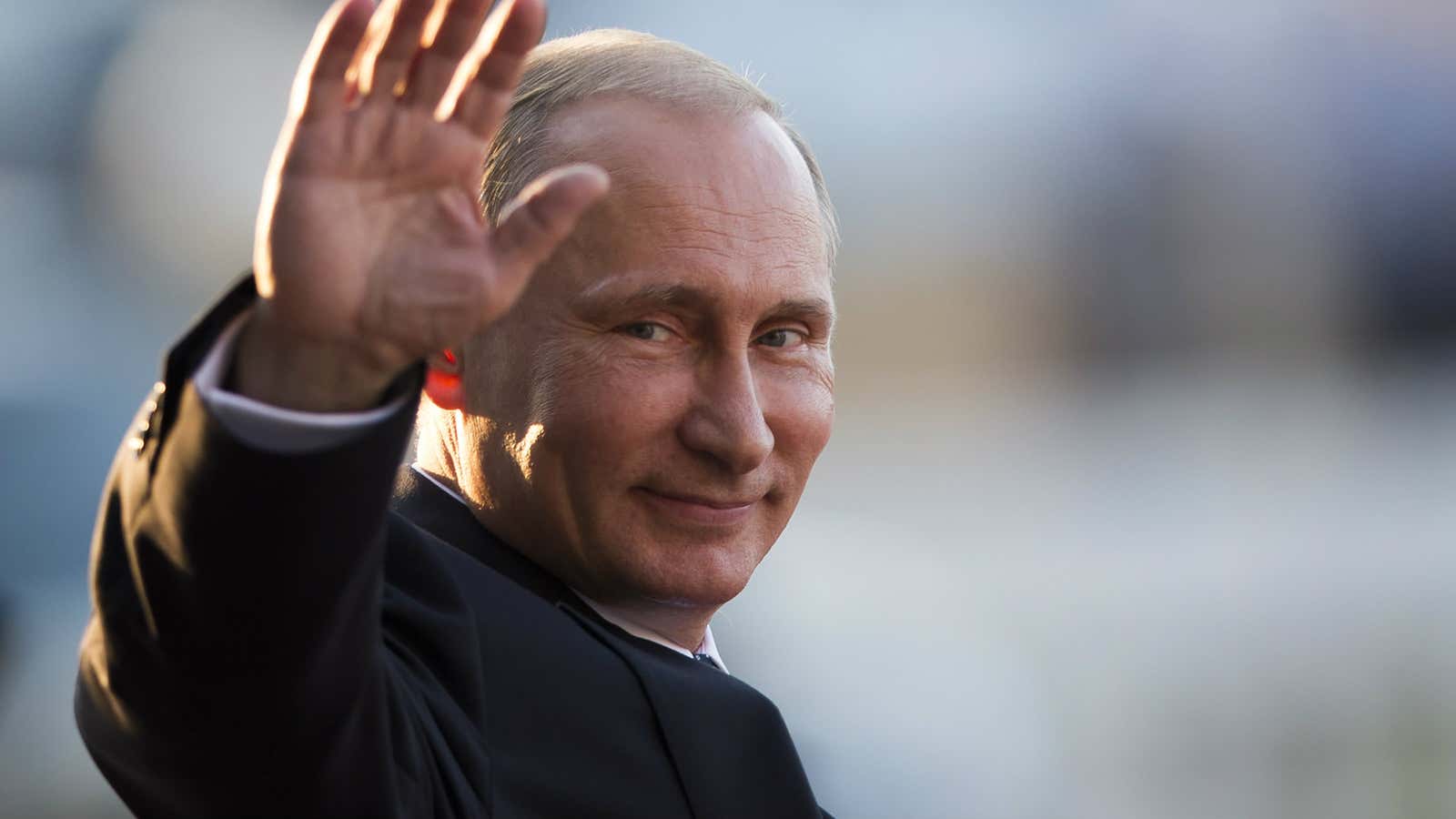A nightmare scenario may be unfolding for Russia and some OPEC members: Low oil prices, rather than being a fast way to hobble upstart US shale oil, seem likely to linger for quite a while longer, perhaps well into next year and beyond.
If prices do stay in their current range of $45 to $55 per barrel—and a lot of analysts believe they will, if not fall even further—some of the world’s petro-rulers have tough decisions ahead to stave off serious political instability. In early Asia trading today, internationally traded Brent benchmark futures were as low as $53.01 a barrel.
As you see in the chart below, oil began its plummet some 13 months ago, when Brent futures peaked June 24, 2014, with a close at $112.60 a barrel. The slide picked up pace around the start of 2015 and reaching a new low Jan. 13, closing at $47.82 a barrel, a dizzying 57% plunge.
It turned out that Saudi Arabia had decided to flood the oil market. The reason was to sweat out the drillers of high-cost but increasingly bountiful new oil supplies, especially from the US shale patch, but also Canada, Brazil, and elsewhere. With some of the world’s lowest-cost oil fields and some $750 billion in the bank, the Saudis knew they could wait out lower prices much longer than many of the new suppliers. They were prepared to be patient as long as five years until rivals cried uncle, some analysts said.
But not all the petro-states have such cash reserves. Among those are Russia, whose state budget—the funder of much in the way of social spending and subsidized natural gas prices—relies heavily on oil and natural gas exports. While we don’t know what exactly goes on in the mind of president Vladimir Putin, his game face suggested the belief that oil prices would stay low for several months—perhaps as long as a year—but by the latter half of this year, would begin to climb back. One might say that he was relying on that because of the combined economic hit of the low prices and Western-led economic sanctions connected to his July 2014 invasion of Ukraine. But, as we’ve said, that increasingly is not the way the market looks.
Notwithstanding his game face, Putin is in trouble the longer that oil prices stay low. Having roiled Europe, which is part of the sanctions regime against Russia, Putin last year made a high-profile strategic shift to China, signing gargantuan oil and gas deals with the Asian giant. But since then, not much has happened.
Eurasia Group’s Emily Stronquist is skeptical about the future of Putin’s desired anti-Western alliance with Beijing. “The Chinese have not jumped at new opportunities the way Russia had hoped, and a number of shortcomings in Russia’s energy relationship with China have left the impression that Russia’s energy ‘pivot’ is lacking in real substance,” Stronquist said in a July 29 note to clients.
The oil price trouble is not only in Russia. Apart from a handful of OPEC states, including Kuwait, Qatar, Saudi Arabia, and the United Arab Emirates, no member of the cartel is positioned fiscally to withstand a long bout of low prices. The low prices have also led major oil companies to pull back spending, and made them much pickier about where they will drill. Stung by lukewarm interest in a recent auction of oil properties, Mexico has postponed long-awaited bidding for deepwater oil assets, and sweetened the deal.
But Mexico has a broad-based economy. Almost without exception, OPEC and Russia are utterly reliant on oil. The Arab Spring was a wakeup call that local populations are restive. Without the lubricant of social spending, they may become even more impatient for change.
